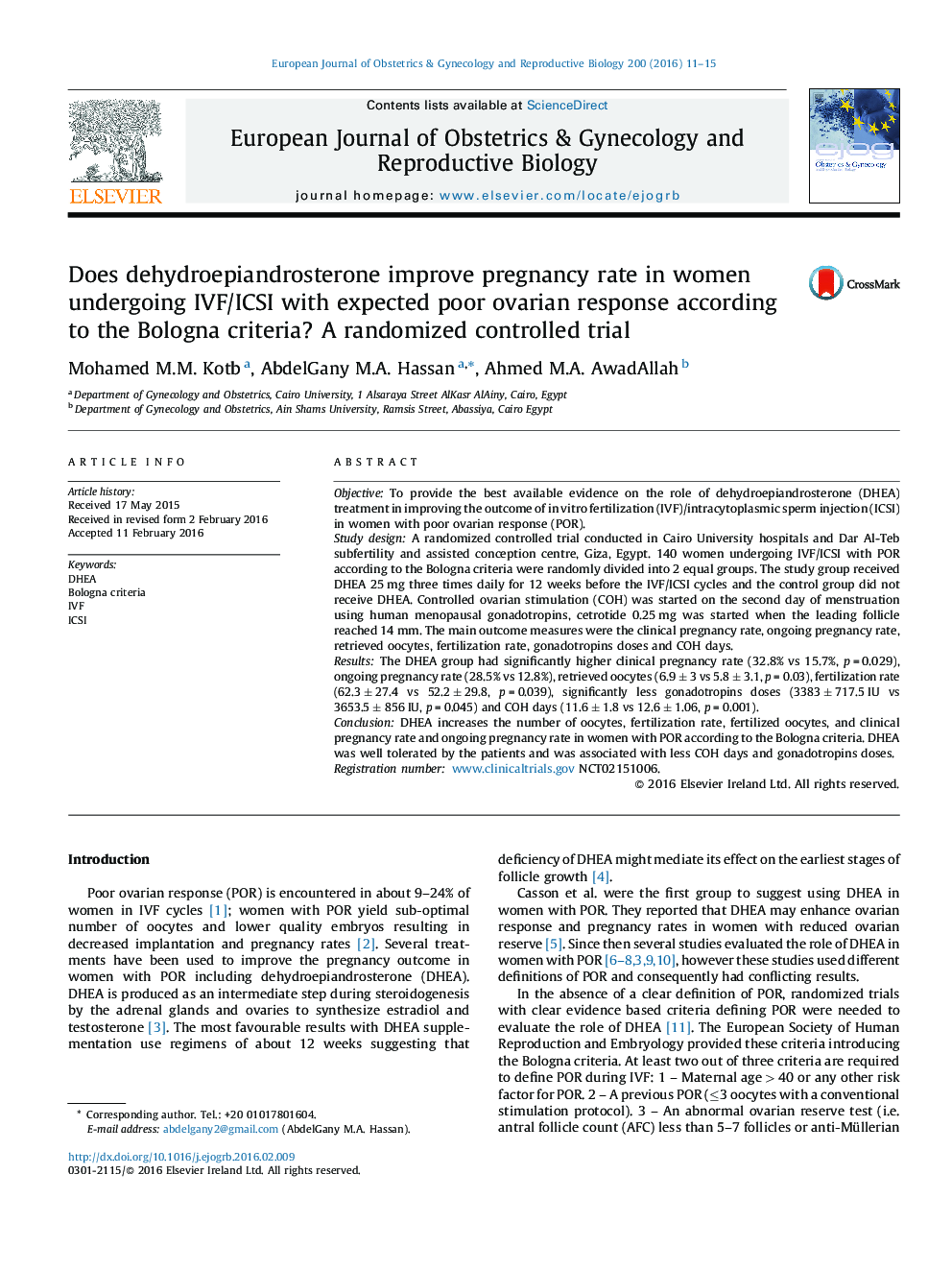| Article ID | Journal | Published Year | Pages | File Type |
|---|---|---|---|---|
| 3919252 | European Journal of Obstetrics & Gynecology and Reproductive Biology | 2016 | 5 Pages |
ObjectiveTo provide the best available evidence on the role of dehydroepiandrosterone (DHEA) treatment in improving the outcome of in vitro fertilization (IVF)/intracytoplasmic sperm injection (ICSI) in women with poor ovarian response (POR).Study designA randomized controlled trial conducted in Cairo University hospitals and Dar Al-Teb subfertility and assisted conception centre, Giza, Egypt. 140 women undergoing IVF/ICSI with POR according to the Bologna criteria were randomly divided into 2 equal groups. The study group received DHEA 25 mg three times daily for 12 weeks before the IVF/ICSI cycles and the control group did not receive DHEA. Controlled ovarian stimulation (COH) was started on the second day of menstruation using human menopausal gonadotropins, cetrotide 0.25 mg was started when the leading follicle reached 14 mm. The main outcome measures were the clinical pregnancy rate, ongoing pregnancy rate, retrieved oocytes, fertilization rate, gonadotropins doses and COH days.ResultsThe DHEA group had significantly higher clinical pregnancy rate (32.8% vs 15.7%, p = 0.029), ongoing pregnancy rate (28.5% vs 12.8%), retrieved oocytes (6.9 ± 3 vs 5.8 ± 3.1, p = 0.03), fertilization rate (62.3 ± 27.4 vs 52.2 ± 29.8, p = 0.039), significantly less gonadotropins doses (3383 ± 717.5 IU vs 3653.5 ± 856 IU, p = 0.045) and COH days (11.6 ± 1.8 vs 12.6 ± 1.06, p = 0.001).ConclusionDHEA increases the number of oocytes, fertilization rate, fertilized oocytes, and clinical pregnancy rate and ongoing pregnancy rate in women with POR according to the Bologna criteria. DHEA was well tolerated by the patients and was associated with less COH days and gonadotropins doses.Registration numberwww.clinicaltrials.govNCT02151006.
